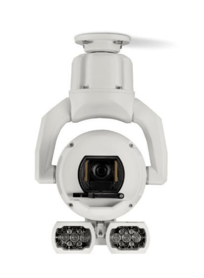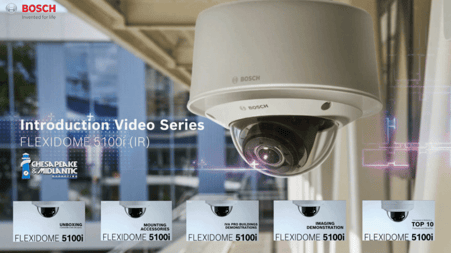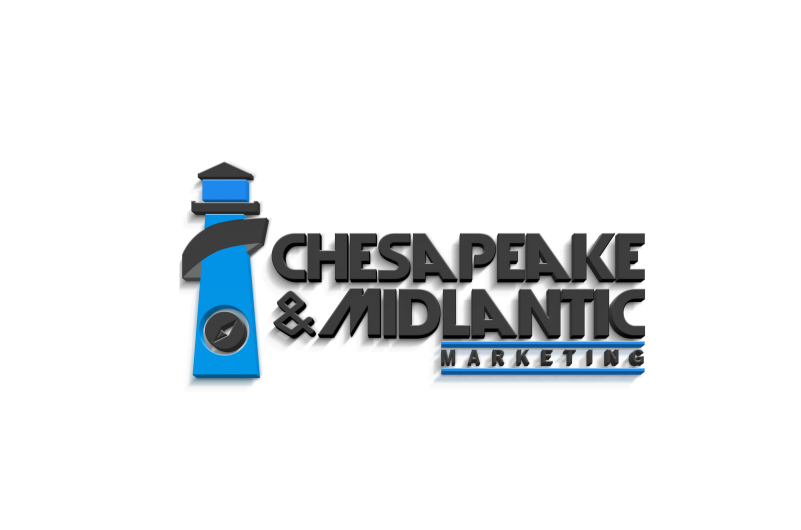
 In the vast field of security surveillance, there has been a longstanding debate about the use of standard color security cameras in lit environments versus infrared (IR) illumination cameras in dark or unlit conditions. Interestingly, we came across an article from BGE that called out visible lighting as a way to increase security at a facility.
In the vast field of security surveillance, there has been a longstanding debate about the use of standard color security cameras in lit environments versus infrared (IR) illumination cameras in dark or unlit conditions. Interestingly, we came across an article from BGE that called out visible lighting as a way to increase security at a facility.
This article will delve into the complexities of both, exploring their respective strengths, weaknesses, and most appropriate contexts.
Standard Color Security Cameras in Lit Environments
Standard color security cameras are the traditional type of security camera and are widely used in areas with ample artificial or natural lighting. These cameras are capable of providing clear, full-color video feeds that can help identify specific details like the color of clothing, hair, skin, vehicles, and so on. This detail can be pivotal in identifying suspects in case of incidents, a feature that’s not achievable with monochromatic infrared imagery.
 However, the effectiveness of color security cameras is deeply dependent on the quality and consistency of light. Shadows, overly bright areas, or quickly changing light conditions can degrade the quality of the footage, making it less useful for identification purposes. Furthermore, their performance significantly diminishes during nighttime or in poorly lit environments. This is why it's important to request a camera demonstration before making a significant purchase.
However, the effectiveness of color security cameras is deeply dependent on the quality and consistency of light. Shadows, overly bright areas, or quickly changing light conditions can degrade the quality of the footage, making it less useful for identification purposes. Furthermore, their performance significantly diminishes during nighttime or in poorly lit environments. This is why it's important to request a camera demonstration before making a significant purchase.
Today, cameras, like the Bosch MIC series, can be outfitted with onboard white light emitters that direct visible or IR light exactly where the camera needs to see.
On the more affordable end as compared to the MIC series, Bosch FLEXIDOME 5100i, FLEXIDOME starlight 8000i camera series, and Bosch DINION 7100i bullet cameras are excellent for low-light environments.
Infrared Illumination Security Cameras in Unlit Environments
 In contrast, infrared illumination security cameras excel in unlit or low-light conditions. These cameras use IR LEDs to emit infrared light, which is invisible to the human eye but can be detected by the camera’s sensor as the IR is reflected back to the camera. The result is a grayscale (monochrome) image that shows the scene even in complete darkness.
In contrast, infrared illumination security cameras excel in unlit or low-light conditions. These cameras use IR LEDs to emit infrared light, which is invisible to the human eye but can be detected by the camera’s sensor as the IR is reflected back to the camera. The result is a grayscale (monochrome) image that shows the scene even in complete darkness.
Infrared cameras don't depend on visible light, making them ideal for round-the-clock surveillance, particularly in spaces where maintaining constant lighting may be difficult, costly, or undesirable. They're indispensable for monitoring areas like parking lots, alleyways, stairwells, and warehouses after hours.
Nevertheless, infrared cameras have their limitations. The main one is that they can't capture color information once they go into monochrome mode, meaning some vital identifying details might be lost. Also, if objects are very close to the camera, they can be over-illuminated by the infrared light, causing 'white-out' in the footage unless the camera offers an automatic adjustment to the amount of IR it is emitting as a subject gets closer to the camera, like is available in the Bosch FLEXIDOME 5100i IR for indoor and outdoor applications.
Contrasting Performance and Applications
 When comparing the two types of cameras, it's clear that the choice between a standard color security camera and an infrared camera depends largely on the specific requirements of the application.
When comparing the two types of cameras, it's clear that the choice between a standard color security camera and an infrared camera depends largely on the specific requirements of the application.
In a setting with reliable lighting, like a well-lit office, shopping center, or street, a standard color camera would be the better choice, providing rich details and vibrant color footage. But, in a scenario where lighting is inconsistent or absent, an infrared-capable camera would be the go-to solution, with its ability to 'see' in the dark and record under any lighting condition.
Moreover, while the color camera offers clear, detailed, and colored imagery, it falls short when the lighting is not optimal. On the other hand, the infrared camera, despite its inability to capture color data in complete darkness, offers reliable performance in all light conditions, making it an essential tool in challenging security applications.
Additional Considerations
Aside from no and low light situations, be sure to consider other challenges like snow, rain, fog, dust, cob webs, ice, smoke, and other environmental situations. Sometimes the answer may even be a thermal imaging camera that can detect heat signatures of all objects in front of it. Lastly, the answer may be a combination of camera technologies looking at the same area depending on the application and threat assessment level of the facility.
Which Technology to Use
In essence, no one type of camera is superior to the other; they serve different functions based on the environmental conditions and specific requirements of the surveillance area. A comprehensive security system often incorporates both types, leveraging the advantages of each to provide thorough coverage.
Infrared cameras can keep an eye on the unlit perimeter areas while color cameras monitor well-lit internal sections. This holistic approach is more likely to yield effective surveillance, ensuring that whether in bright daylight or the dark of night, security personnel have the electronic eyes they need to keep premises secure.
Ideally, request a camera demonstration and facility site survey from our team at your location prior to final design or purchase. This will ensure that you get the imaging capabilities that you expect once the system is installed. Contact our team to schedule a demonstration in the mid-Atlantic region of the US >>







